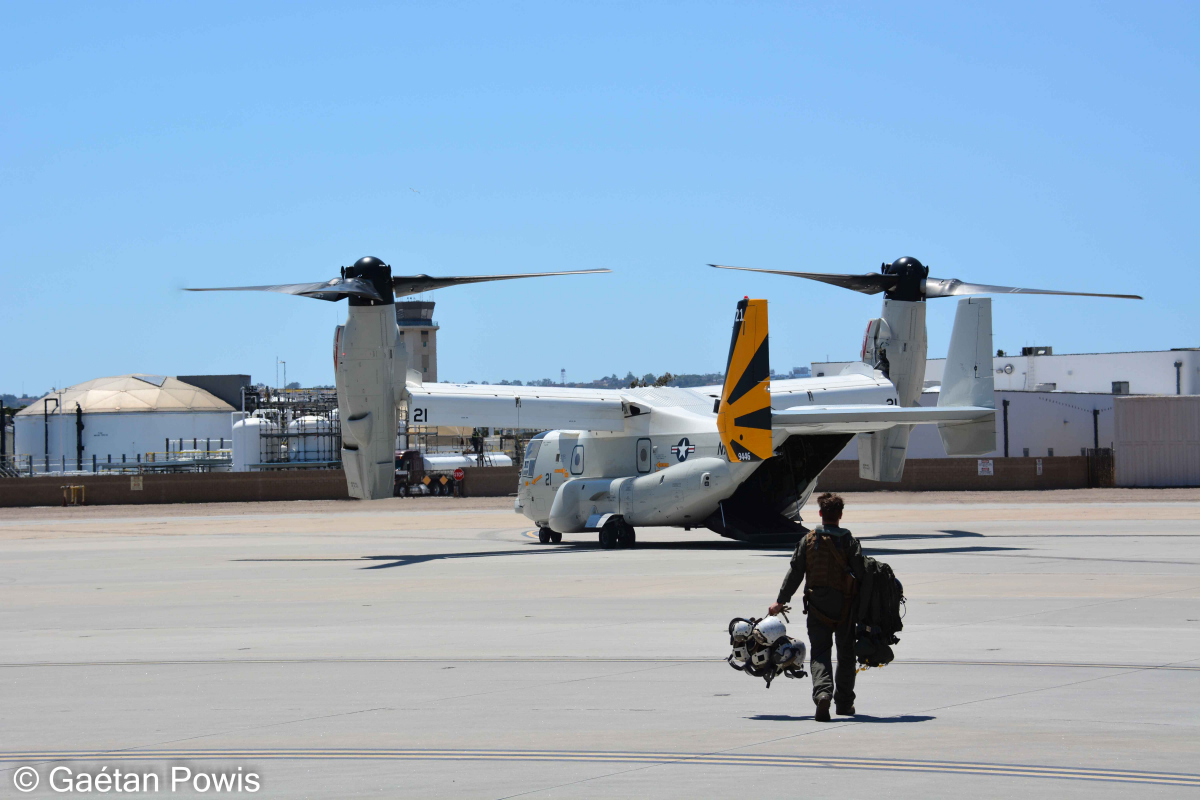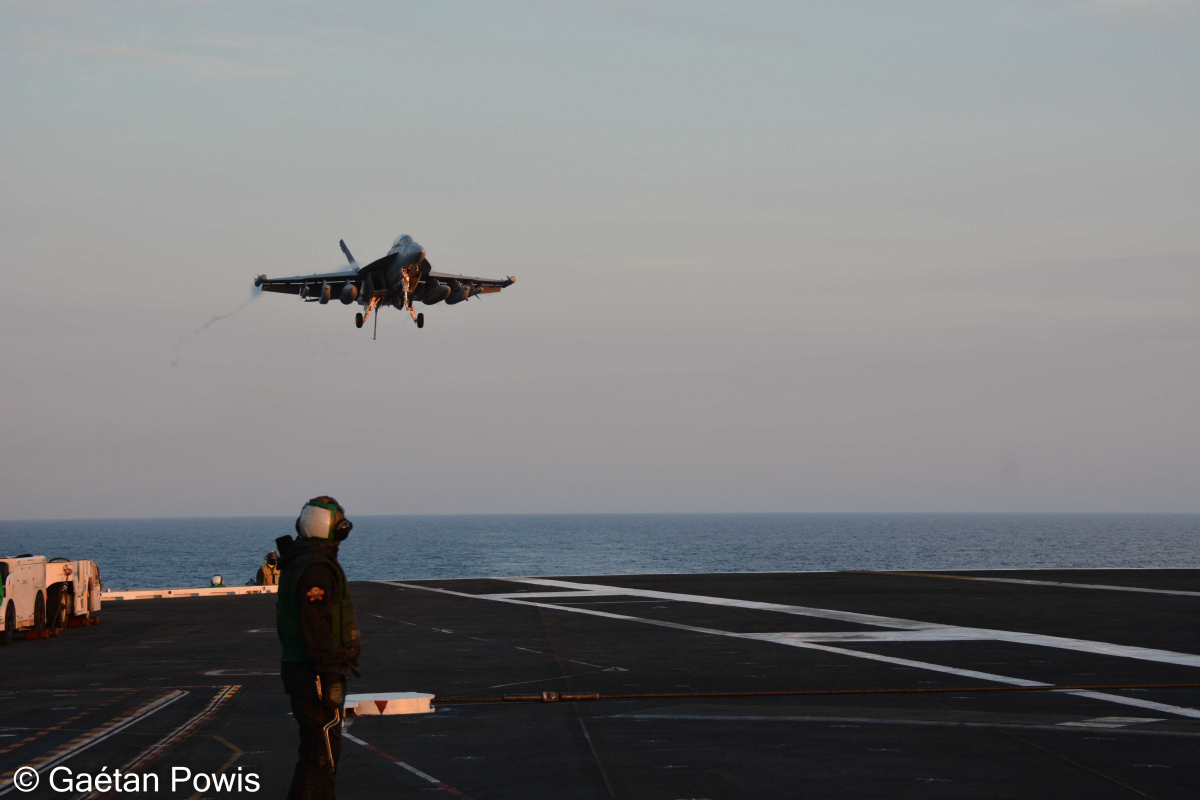Exclusive report from the US aircraft carrier USS Carl Vinson, at the invitation of the US Navy. On the program: landing and catapulting from the flight deck, visits of various departments, exchanges with shipboard personnel, refueling operations at sea and an exceptional return to San Diego.
A naval powerhouse of the first rank
To get to the North Island Naval Air Station (San Diego, USA) by car, you have to cross the Coronado Bridge. This offers a breathtaking view of all the surrounding area... and the immensity of the military installations.
To the southeast, a brief glimpse of the naval base reveals a huge variety of military vessels of all kinds : frigates, destroyers, cruisers, landing support ships, supply ships,... but also the USNS Mercy hospital ship or two equally rare Zumwalt-class destroyers. On the other side of the bridge, to the northeast, lies the naval air station and three huge docks. Exceptionally, they are occupied by three of the US Navy's eleven aircraft carriers, all of the Nimitz class: the USS Carl Vinson (CVN-70), the USS Theodore Roosevelt (CVN 71) and the USS Abraham Lincoln (CVN-72).
The ships present in the waters of San Diego represent only a fraction of the US Navy's resources, clearly demonstrating its ability to project its power across the entire globe.
From the first flights to Top Gun : Maverick
Before boarding, a short presentation of the resources available to the US Navy. This takes place in the headquarters of the Commander, Naval Air Forces, US Navy (COMNAVAIR). This building is also steeped in history: its entrance hall houses a Curtiss A-1 Triad seaplane from the 1910s. It represents the very beginnings of the US Navy naval aviation, as it was officially the US Navy's first model aircraft. The adventure was daring for the pilots : a wood and canvas structure, a small engine,... and a bench without a seatbelt !
Other model of aircraft carriers can also be seen there, but it's the triangle on the ground that really stands out. Although this is the insignia of the COMNAVAIR, it is best known to over 80 million fans of military aeronautics, the hall being seen in the film Top Gun : Maverick.
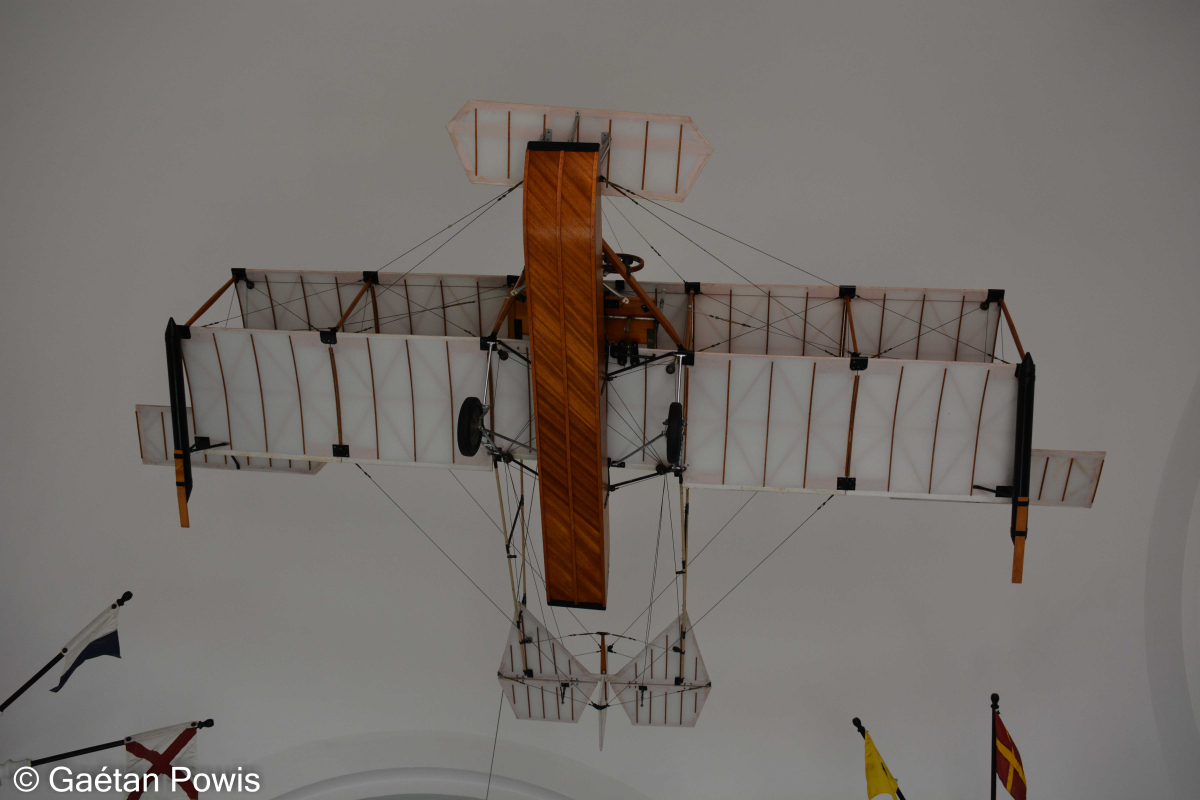

Why CVN ?
The US Navy classifies all its vessels via a well-defined designation system. This designation has often a direct link with the type of vessel : D for destroyer, F for frigate, SSN for nuclear-powered attack submarine,... In contrast, the classification of today's aircraft carriers (CVN) is above all historical. In 1922, the US Navy's first aircraft carrier, the USS Langley (CV-1, Langley class), entered service with the US Navy. She was to operate with the Navy's main battle corps, and was then given the C of cruiser. This classification is even more true for the US Navy's second aircraft carrier, the USS Saratoga (CV-2). Indeed, her hull was intended as a battlecruiser, before a change of assignment during her construction to transform her into an aircraft carrier. Since then, the C has remained in the designation, with some now using the term " carrier ".
If the N for "nuclear propulsion" is obvious, the same cannot be said for the V. Here too, we need to go back to the history of American naval aviation : traditionally, this was the first letter given to US Navy squadrons using fixed-wing aircraft. This tradition continues to this day. From then on, the V means that the ship has fixed-wing units on board. So ;
- C for cruiser/carrier
- V for fixed-wing aircraft on board
- N for nuclear propulsion
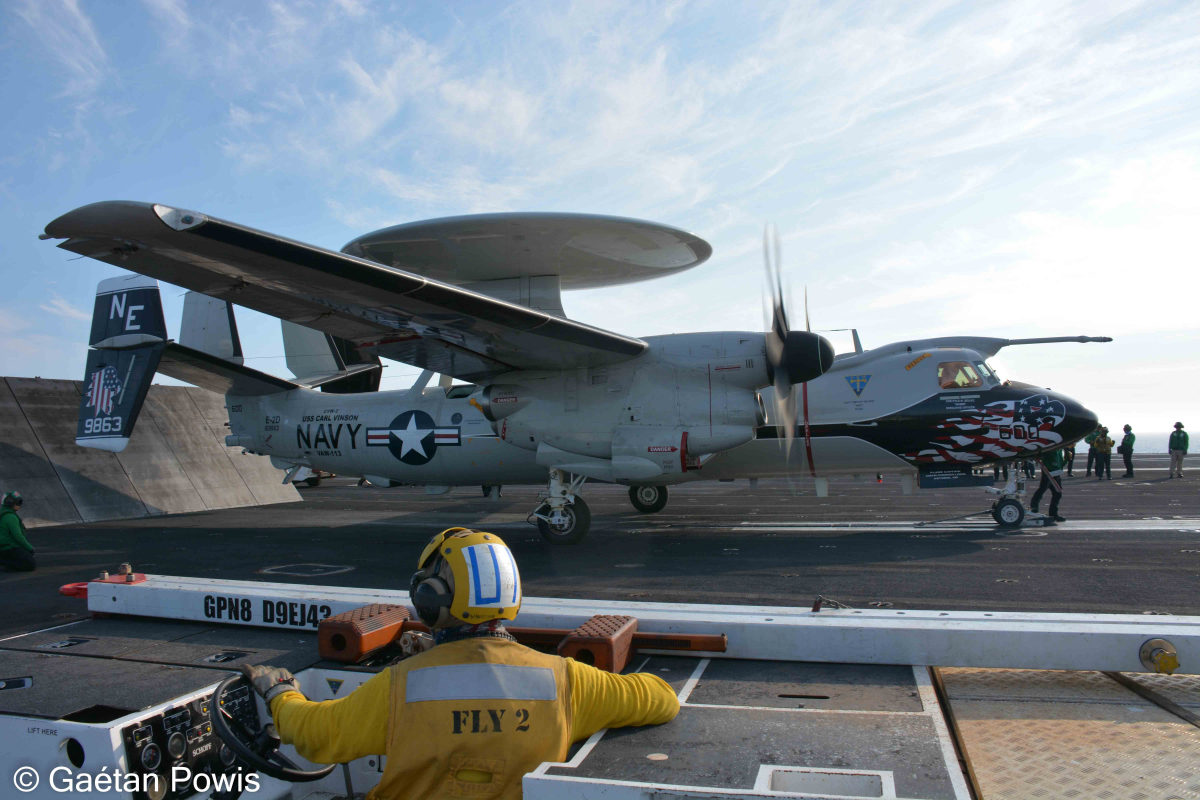

America's Favorite Carrier
As the aircraft carrier casts off and leaves San Diego harbor, a briefing is given by the ship's firefighters. While the entire crew is trained to deal with fire, a specialized fire department exists on board. In just seven minutes, its members must be equipped and on the scene of the disaster, regardless of their location on board. Yet the surface area to be covered is enormous: 332.8 meters long and 76.8 meters wide (maximum surface area), all repeated on more than a dozen decks.
After the explanations comes the discovery of the flight deck, empty of its aircraft. Then comes a chat with an officer in charge of the catapults and arresting wires. He gives his interpretation of the Carl Vinson's nickname, " the America's Favorite Carrier ". He explains that there is no single answer and that, in his view, it boils down to the story of a single red-painted padeye (one of the very many inking points to which the aircraft are attached):
" On May 2, 2011, an helicopter land on the flight deck's landing pad no. 6. and Navy Seals emerge, along with a bloodied, lifeless body deposited just above this padeye. It was the body of Osama Bin Laden, actively sought for the numerous attacks he organized in the United States and around the world. To remember this moment, the padeye is painted red. "
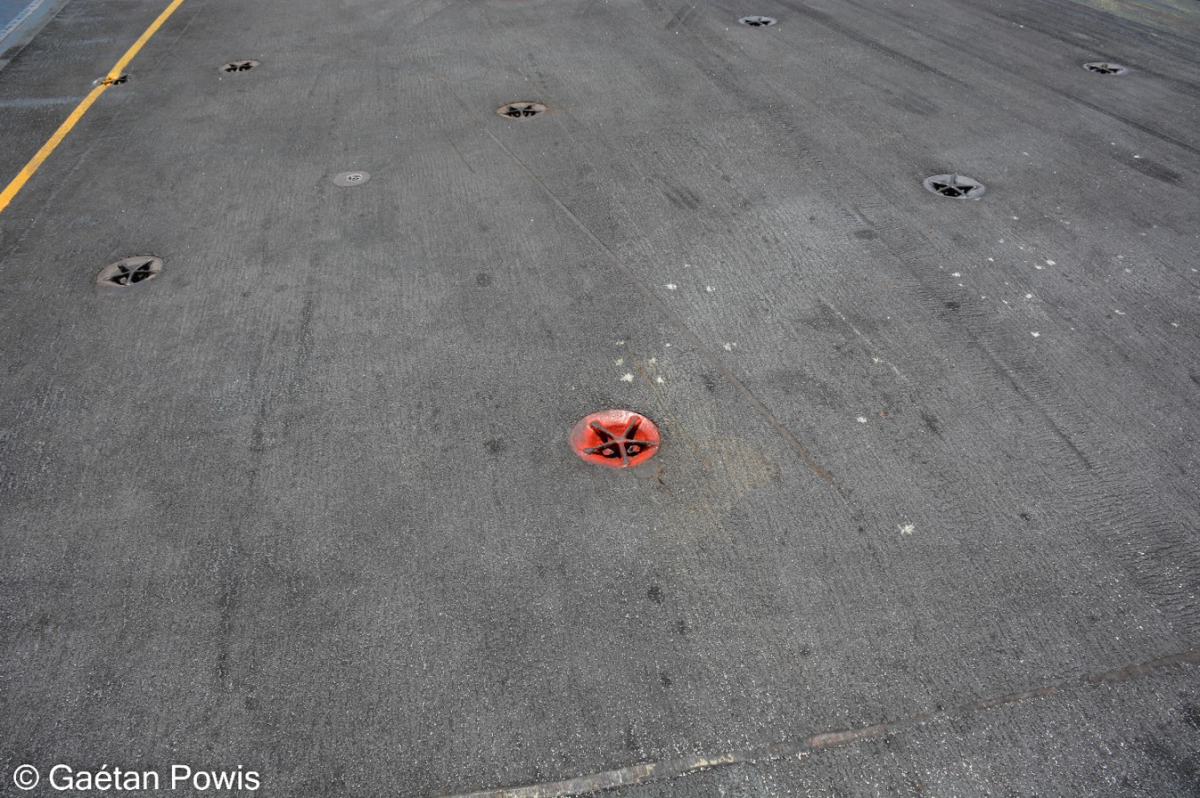

Tours of various departments
A visit to the Carl Vinson includes a tour of various departments, such as the ship's weather service. While this is, as its manager explains, a classic weather station, it's also an ultra-secure room. This is one of the services that enable the aircraft carrier to operate: aircraft must land and be catapulted into the wind. So, wind trajectories are analyzed in advance. On the service's recommendations, the carrier commander can then choose several headings to follow in order to have the optimum wind speed on the flight deck.
An American aircraft carrier is also more than 5,000 men and women who sometimes spend more than six months at sea. Morale is therefore extremely important so the public relations department publishes a weekly ship's news. There are also events organized on special days (running races, giant barbecues on the flight deck, diving from the elevators, etc.), and the carrier's own TV channel showcases the many services offered by this enormous floating city (hospital, postal service, legal service, etc.).
It should be noted, however, that while there is of course a security service, the latter is made up entirely of sailors and naval officers. However, it does not include federal agents from the U.S. Naval Criminal Investigative Service (NCIS). These are deployed on board only temporarily, and only when necessary.
Aircraft landing
While we were leaving the coast, the aircraft carrier's deck is inspected by flight deck personnel: there is absolutely no way that an object - or even a simple shell dropped by a seagull - can enter the aircraft's engines, at the risk of causing major damage. After the inspection, the deck is cleared and the personnel move into position: several MH-60S Knighthawk helicopters are approaching. Unlike the anti-submarine warfare MH-60R Seahawks used from escort ships, the Knighthawks are primarily designed for surface combat missions, combat search and rescue (CSAR), mine countermeasures,... and used to transfer loads to or from the aircraft carrier.
A few hours later, the rest of the embarked air group arrives in several waves. The ball opens with the arrival of the four E-2D Advanced Hawkeye, an advanced early warning and control aircraft. These aircraft are the eyes of the task force: thanks to their AN/APY-9 radar, they can detect targets over 550 kilometers away. They also form part of the wing's missile protection, as sensor data is transmitted directly to the AEGIS combat system on the aircraft carrier, destroyers and escort cruiser.
They are then followed by EA-18G Growler fighters, the electronic warfare version of the F/A-18F Super Hornet. They arrive with their full complement of weaponry: two AN/ALQ-218 radar detection pods (SIGINT) (on the wingtips), three AN/ALQ-99 jamming pods capable of jamming enemy radar and communications, including GSM (one under each wing and one under the belly), and AGM-88 HARM anti-radar and AIM-120 AMRAAM air-to-air missiles.
The F/A-18E/F Super Hornet follows, arriving in various configurations :
- Unarmed
- With air-to-air missiles and ammunition pylons
- In refuel configuration, with its four tanks and probe-and-drogue fuel transfer pod
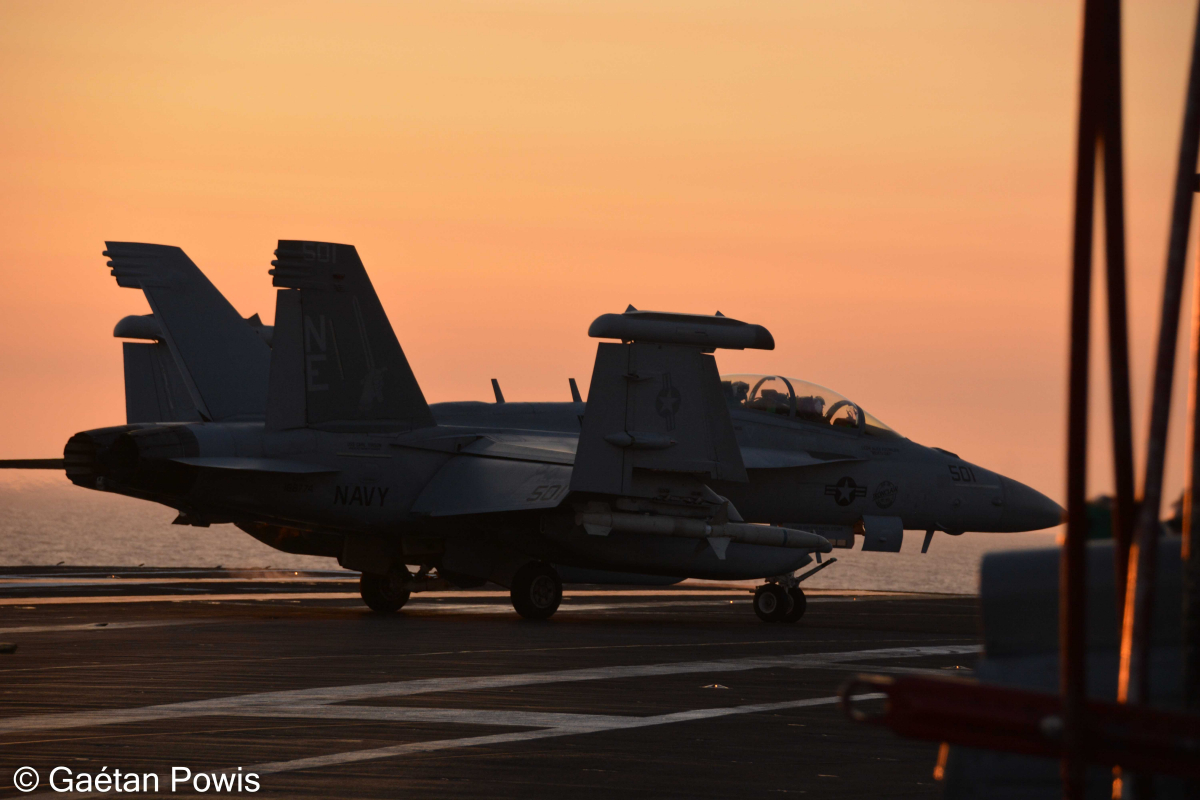

Wave-off !
There aren't many fighter jets left in the air a few Super Hornets but also the F-35C Lightning IIs that are due to close the landing sessions for the sixty or so aircraft on board. However, the personnel in charge of the catapults begin to get restless as the aircraft approach but fail to land. They don't even do a touch-and-go. A quick glance at the landing mirror shows a red cross flashing for each aircraft coming to the end of the circuit. The shooter then explains that one of the systems on one of the four stop strands has a fault, and the planes are in " wave off ". The brief repair involved servicing the machine in question and changing the stop strand. This procedure requires that no personnel not trained in deck operations be present for safety reasons.
Precision with signs
During these landings, other Knighthawk helicopters also landed. The Advanced Hawkeye helicopters also performed a series of catapults and landings from the carrier's forward catapults. So, in a very short space of time, a veritable millimeter ballet was set in motion. However, this ballet is very rarely orchestrated by radio exchanges: the noise of the wind, of the planes being landed and catapulted, the noise of the tractors on the deck... it's extremely complicated to be able to talk to each other directly or even by radio. Exchanges are then overwhelmingly carried out using signs between bridge personnel or between bridge personnel and the aviation bridge.
A double exception in the Pacific
The second day saw a rare maneuver: the Carl Vinson, one of the US Navy's 11 aircraft carriers, trained to refuel the USS Princeton, one of the US Navy's 17 Ticonderoga-class cruisers. This maneuver is usually carried out from a ship specialized in refueling, but the aircraft carrier can refuel its escort via its large kerosene reserves. It should be noted that US Navy aircraft carriers never carry marine diesel, the fuel used on the US Navy's conventionally-powered ships.
Concretely, the USS Princeton presented itself to starboard, some 30 meters from the Carl Vinson while following a trajectory parallel to the latter. A first line was launched from the bow of the Carl Vinson: this line is extremely important as it is delimited and clearly defines the distance separating the two vessels. If this distance changes, one of the two ships has altered its course and must therefore return to the correct heading or order an emergency separation.
The second line is launched from the stern of the aircraft carrier. It's a line that gradually thickens to a wire... pulled by a good dozen sailors on the cruiser. Once lashed to the cruiser, the hose glides by gravity and enables the refueling of the Princeton's precious helicopters and drones.
During every deployment of an US Navy's aircraft carrier, the task force always includes a Ticonderoga-class cruiser. Its main function is to protect the fleet from all airborne dangers, such as aircraft, helicopters, missiles of all kinds, but also from threats emanating from ships, on land,... In fact, this class of cruisers is capable of carrying 122 missiles in vertical launch systems (VLS) and 8 Tomahawk sea-to-sea missiles in two standard launchers located aft... not to mention the other weapon systems.
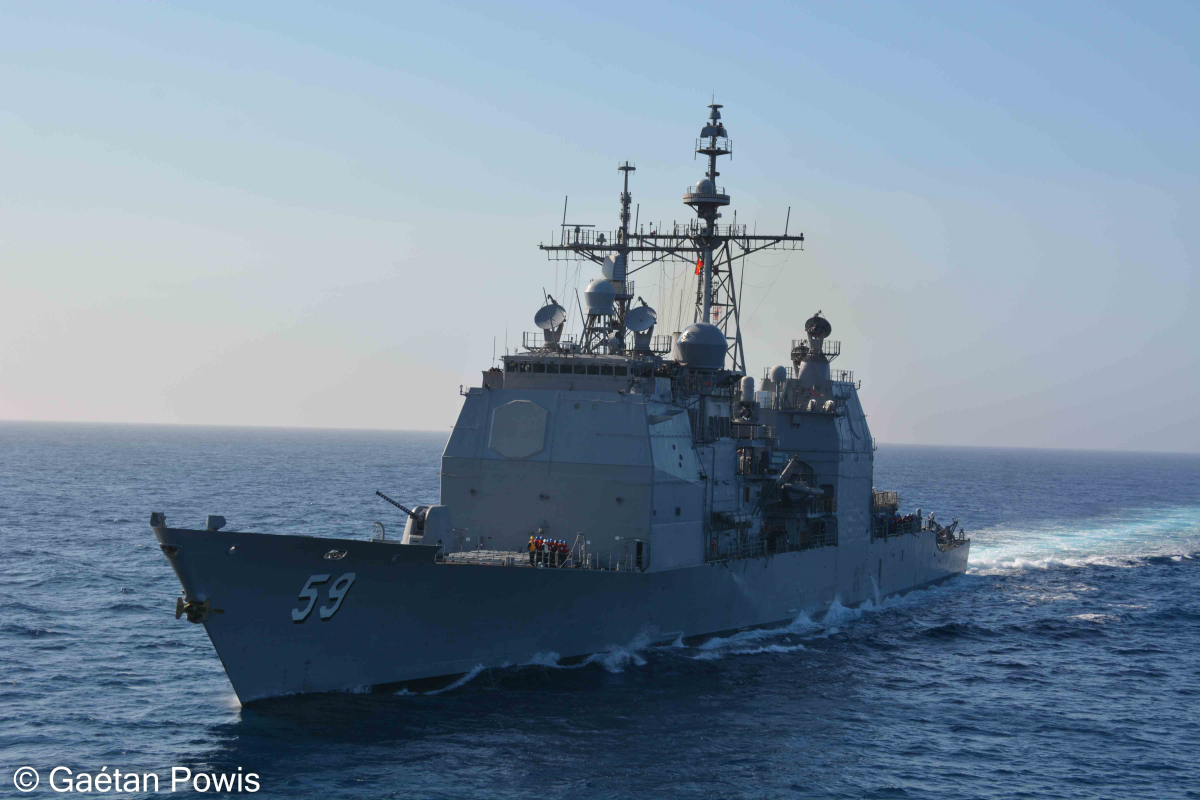

A one-of-a-kind return
The return was not in port, as the aircraft carrier left for training and qualification maneuvers in preparation for its next six-month deployment. So the US Navy pulled out one of its aircraft: the return trip to San Diego was made in a CMV-22B Osprey tiltrotor. This aircraft, with its vertical takeoff and landing capabilities, thanks to engines in a pivoting pod at the end of the wings, is gradually replacing the US Navy's C-2 Greyhounds. Greyhounds are used as Carrier Onboard Delivery or COD : an aircraft capable of performing rotations between the mainland and the aircraft carrier, and whose cargo capabilities allow the transport of people, stretchers or freight, including a fighter jet engine.
The arrival of the CMV-22B means that the US Navy now has a COD with both cargo and sling capability, an in-flight refuelable COD,... As a tiltrotor, it can also refuel the entire task force, from surface ships to nuclear attack submarines, thanks to its hovering capability : an helipad is no more needed !
In fact, the Carl Vinson is the first US aircraft carrier to deploy Osprey CMV-22Bs in 2021. The CMV-22B should not be confused with other Oprey variants, such as the Marine Corps MV-22B transport or the CV-22B used by US Air Force Special Forces.
